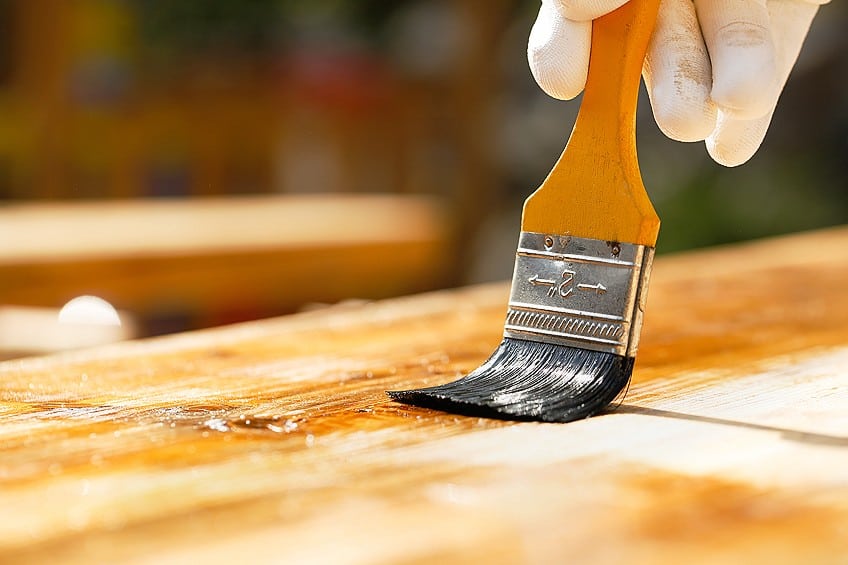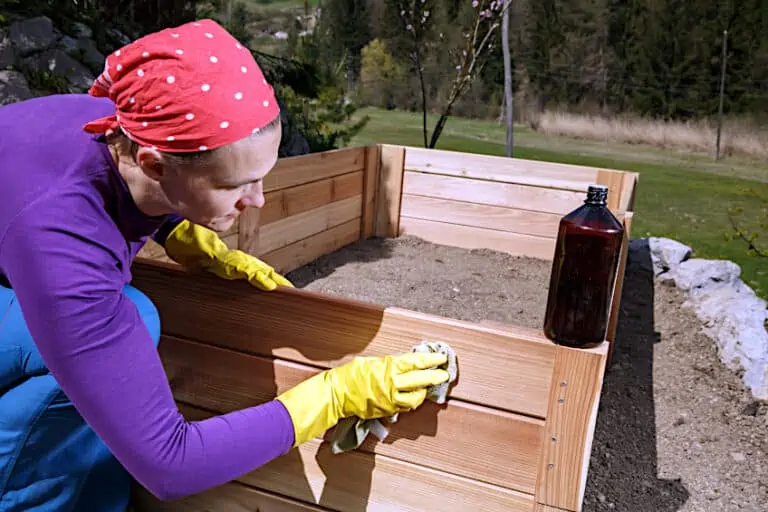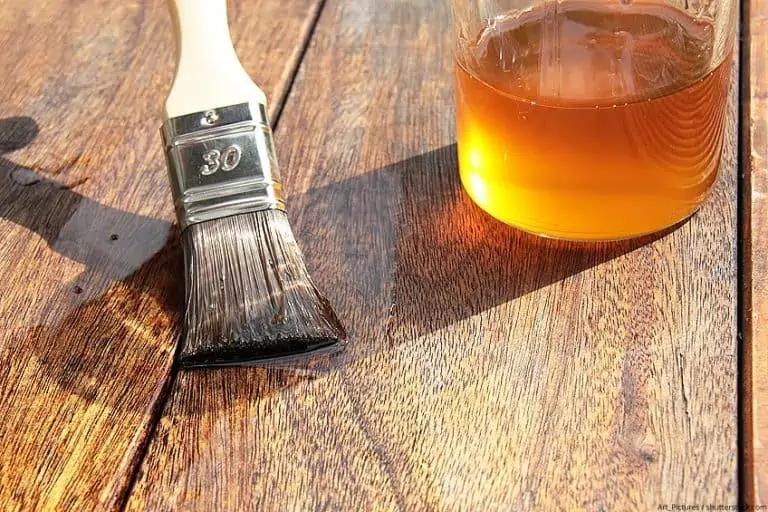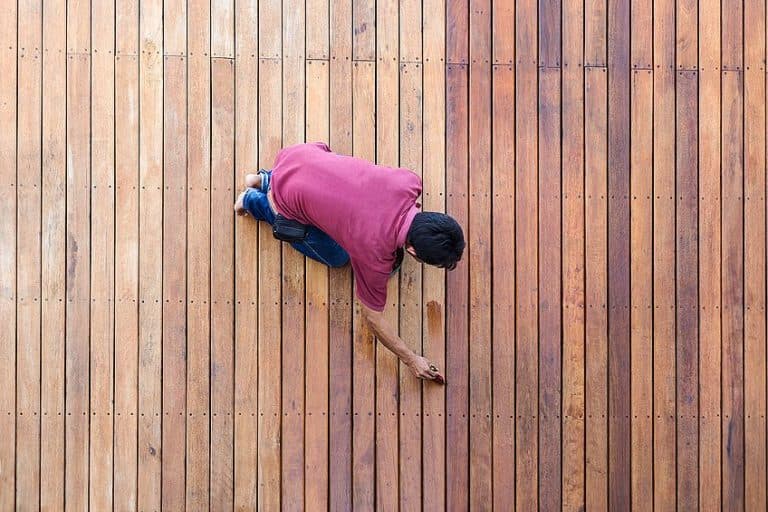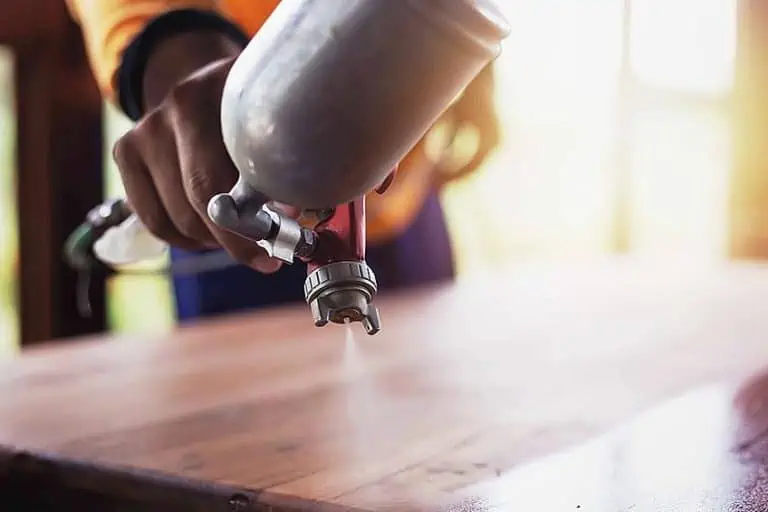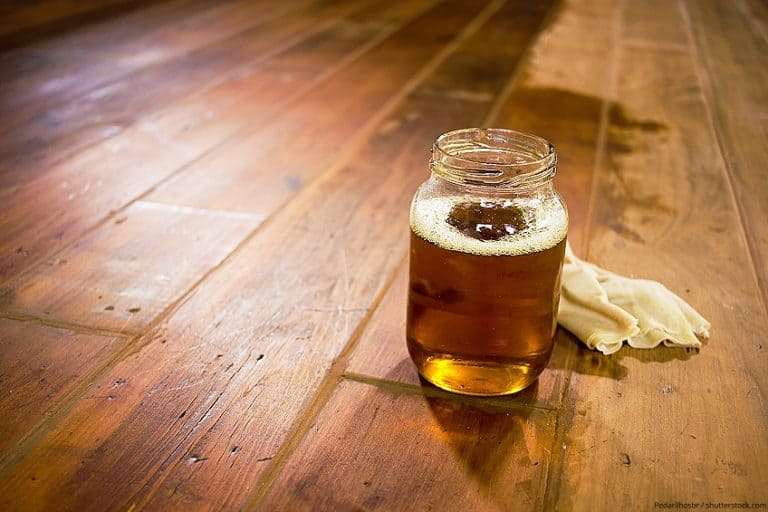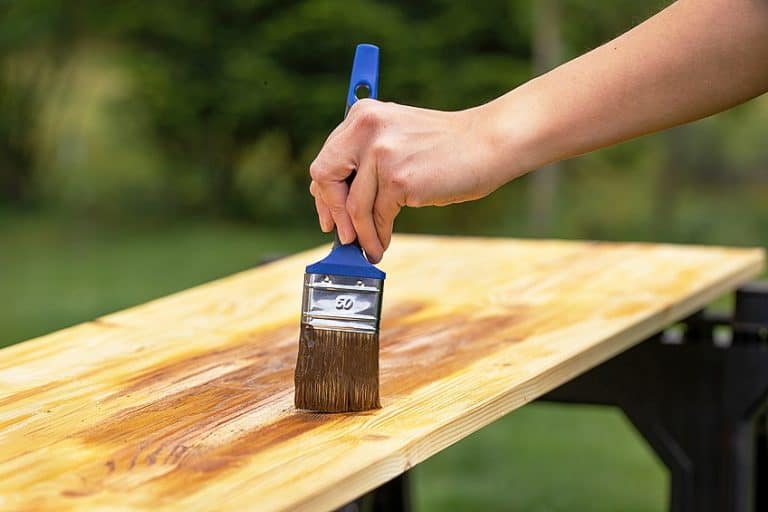How to Waterproof Wood – A Guide on Waterproofing Wood
Nothing can surpass the beautiful look and feel of wood inside as well as outside the home. From furniture and cabinets to flooring, wood is a popular choice. However, wood is frequently exposed to the environment and can be affected by moisture, heat, sunlight, and general wear and tear. Wood therefore needs to be protected. One of the ways to do this is to apply a waterproof wood finish, which will not only protect the wood but will also preserve and improve its beautiful, natural look.
Why You Should Waterproof Wood
The first thing to clear up is that there is a difference when discussing water-resistant versus waterproofing. A water-resistant treated surface can resist a certain amount of moisture. So, small spills you clean up straight away should pose no problem to the wood underneath. However, if there is constant moisture or water, it will eventually seep through into the wood.
A waterproof wood surface, on the other hand, is impervious to water as there is a permanent hard coat that water cannot penetrate. A water-resistant coat is okay for surfaces inside like the kitchen or bathroom, but a waterproof wood finish is needed on wood surfaces that are exposed to the elements, such as outdoor wooden decks and furniture.
If water does get through to the wood surface, it will be absorbed, as wood is porous. The wood will then distort, expand, and eventually create structural issues. Some woods can withstand moisture better than others, so the choice of wood also comes into play when deciding on wooden decks and other wood projects.
All wood that remains outside should be treated, even if it is located underneath a porch covering. Any wood you do not treat will begin to rot and will start to warp and crack. The water can also wash away the color of the wood and develop mold, which in turn, will also discolor the wood.
Usually, products that offer a waterproof wood finish also offer other benefits like UV protection, protection against mold and insects, and more. Using a waterproof sealant for wood will help to extend the lifespan of your wood piece, but will not make it indestructible. There is usually a certain amount of maintenance and care you must take to keep your wood surface looking good.
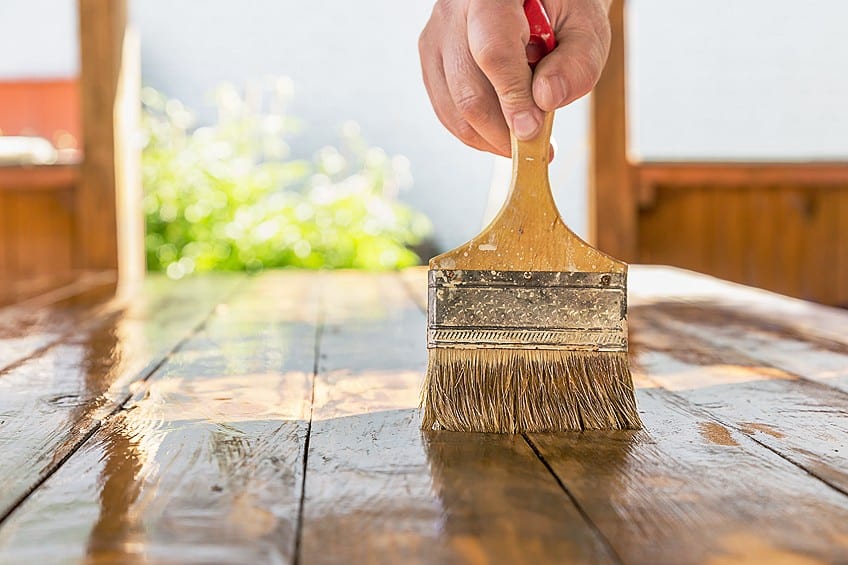
How to Water Proof Wood
Now that we have established the necessity of waterproofing wood, especially when exposed to the environment, we can now look at the different ways in which one can waterproof wood. You will need to decide what wood finish and product is best. The most important thing to take into consideration is whether you need a finish for inside or outside the house. Also take note that some products are made specially for a darker wood, while others are to be used on lighter wood colors.
Waterproofing Wood Using an Oil Finish
The first option for waterproofing your wood is to use an oil wood finish. Here you have some choices as well, but the most common oils are those of linseed and tung. However, many of the commercial wood oils come in a combination of oil, polyurethane, and mineral spirits. This combination helps to remove any tackiness and improves the drying times as well as adding other benefits.
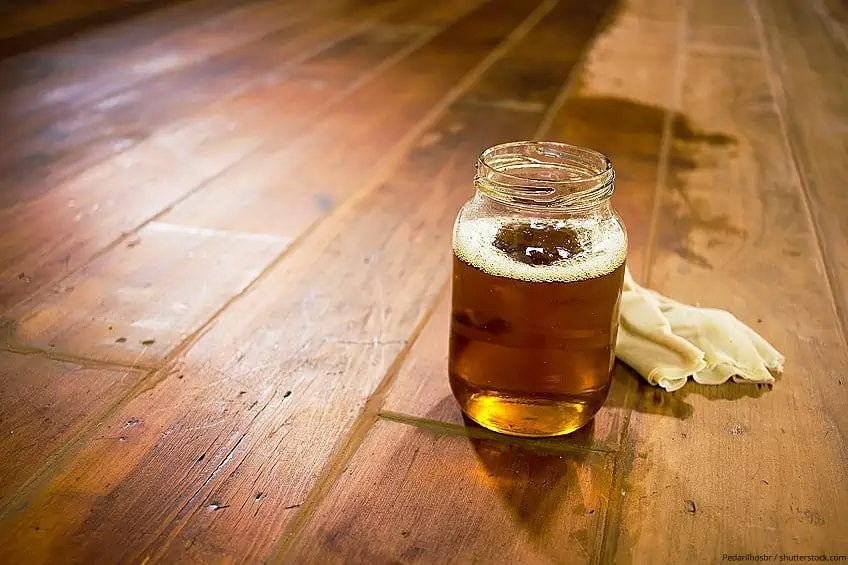
Wood oils are easy to apply, as you simply have to use a clean cloth and wipe onto the wood surface. You can check out our ‘Best Wood Oil‘ article for more information about this. When purchasing your wood oil, you can go for the pre-mix or you can make your own. Take some tung or linseed oil and mix it into a container with mineral spirits and liquid polyurethane. Add one part of each ingredient into the mix and test out the solution on an extra piece of wood.
There are many benefits of wood oil, although as with all things, there are also some disadvantages.
Pros
- Deeply penetrates the wood
- Dries hard and fills any cracks
- Helps to restore the original look of the wood
Cons
- Wood surface is not completely protected from water damage
- Does not have a smooth and shiny appearance like varnish
- Needs to be reapplied every few months
Waterproof Wood Sealer
Some of the main wood sealers around include varnish, lacquer, and polyurethane. Sealants come in cans and can be brushed or sprayed on. The wood surface needs to be prepared before application by cleaning and sanding it. The first coat should then be left to dry thoroughly before lightly sanding and adding another coat. This process can be done over as many times as is needed.
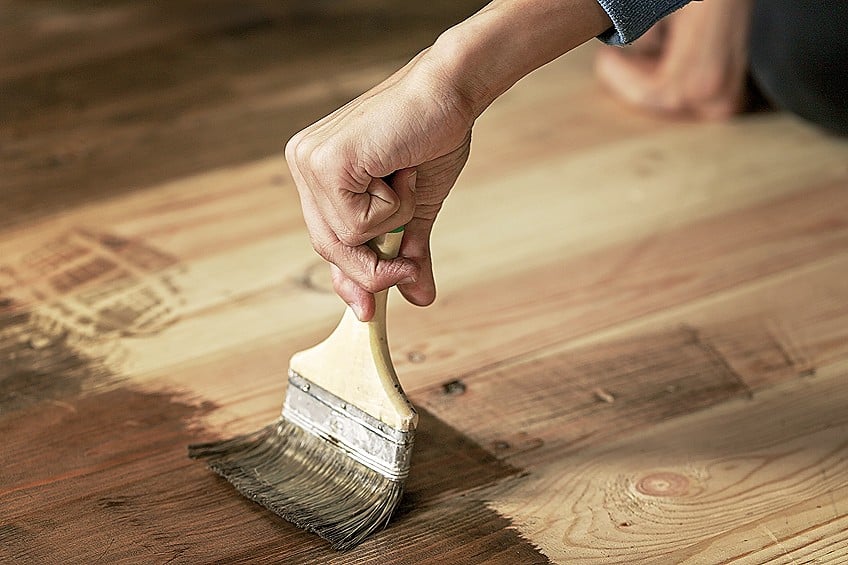
Sealants also contain chemicals, so when working with them it is advisable to do so in a space that has excellent air circulation. You may also want to think about wearing gloves and other protective gear.
When purchasing, read the labels as it will tell you what the product is best used for. For example, you can get sealants that are specially used as a furniture sealant, deck sealant, or fence sealant. The best product to use outside is usually a marine wood sealant that can withstand water and UV light from the sun.
Pros
- Resists water efficiently
- Provides a rich color to the wood surface
- Dries easily
- Only needs to be maintained occasionally
Cons
- Contains harmful chemicals
- Clean-up might be difficult
- Strong odors that require ventilation
- Some sealants may yellow over time
Combination Waterproof Sealant-Stain for Wood
This type of waterproof wood finish provides a waterproof layer and color, as it contains color pigments and added binders. The added binders can be alkyd-based, oil-based, or water-based. Also, many use this type of sealant because it dries faster than other sealant options.
The available colors come in variants of transparent to opaque, depending on the amount of pigment added. When using this type of waterproof wood finish outside, you will need to find a product specifically for exterior use, and will need to maintain the wood surface by reapplying every one to two years.
Pros
- Dries fast
- Easy to use
- Available in an array of colors
Cons
- Alkyd-based products tend to leave a residue
- Need to make sure that the product is designed for exterior use

Applying a Waterproof Wood Finish
The process is similar for all waterproof wood finish application methods. Choose the wood oil finish you want, and then create your own mixture of oil (one-part), turpentine (one-part), and apple cider vinegar (half-part). It is not compulsory, but this mixture helps to preserve the oil and also provides a tougher finish.
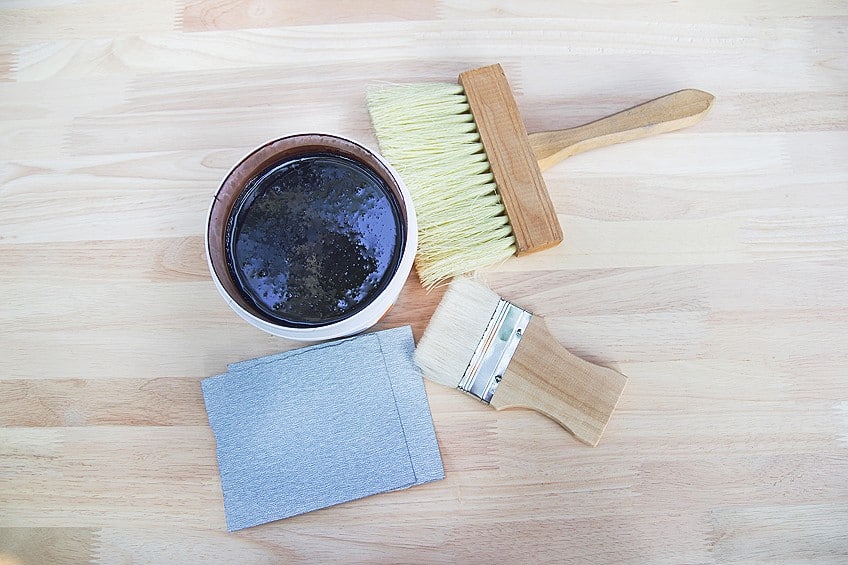
The wood surface then needs to be prepared by sanding until smooth. Wipe and clean the wood surface and make sure it is dry before applying any wood oil finish. Fold a clean rag and apply your mixture to the rag and then to the wood surface. Rub in the oil going in the direction of the grain from the inside towards the outer edges.
Once the entire wood surface is covered, wipe off any excess mixture and allow the surface to dry for 24 hours. Each time, read the product directions for specific drying times. Once dry, you can once again sand the surface carefully with a fine-grit paper. You can then follow the same process and add as many coats as possible until you reach the type of finish you want.
When applying a waterproof sealant for wood, the process is similar. The surface should be cleaned and prepared until smooth and dry. If there is any old paint or finishes, these will have to be taken off first. The sealants can be applied using a clean rag, especially tung oil. However, solvent-based products are best applied with a brush. Some sealants can also be used in a sprayer, but you will have to make sure that the product can be applied in this manner.
The number of coats you need depends on the wood hardness. For example, pine and cedar are softer woods, so two or three coats should be fine. Oak is a harder wood and may only require a single coat.
Remember always to read the product instructions beforehand to learn about all the prerequisites for a particular product. The same process applies to stain-sealer products, which can be applied with a brush. You do not have to remove any excess stain-sealer, as it will soak directly into the wood once applied.
How to Waterproof Wood for Bathroom
Waterproofing wood for the bathroom is fairly easy. Begin by ensuring that your wood surface is thoroughly dry. When it is wood in the bathroom, it might be difficult to know if it is dry. So, to guarantee a dry surface, remove the wood piece from the bathroom and allow it to dry in the sun properly.
Upon application, the perfect environment should be at room temperature. This will ensure that the sealant dries evenly. Also, if you apply it in a closed environment there might be odors, which can cause problems and pose a health risk. If possible, rather work outside on a project than inside the bathroom.
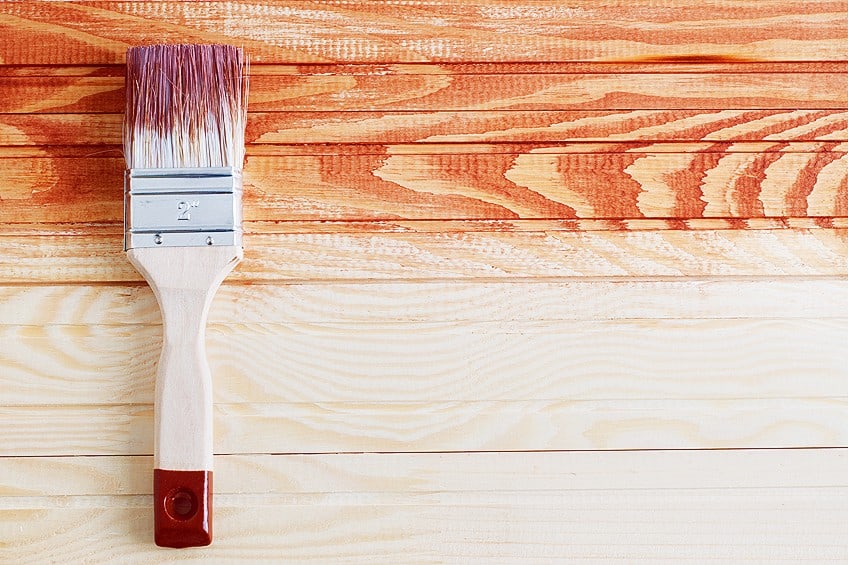
How to Weatherproof Wood Outdoors
There are usually signs that your outdoor wood surfaces need attention. Cracking and peeling are obvious signs that you need to apply a waterproof wood sealer before the next rainfall season. When it comes to outdoor wood, some are more resilient than others. So, selecting the right wood is the first step when purchasing outdoor furniture or creating your own outdoor wood piece.
The type of wood you choose might cost more, but this will save you money in the future, as a proper wood will hold up over an extended time. There are a few main types of wood that can be used in the USA. These woods are easy to come by and are mostly suitable for outdoor applications.
Depending on where you live, the best outdoor wood includes cypress, which is the main choice for those who live in the eastern parts of the United States. You also have western red cedar, which is perfect for those residing in the Midwest. Finally, the great redwood is the best choice for those in the western parts of the United States.
Safety Precautions for Waterproofing Wood
As with many things, you will need to make sure that you follow certain safety protocols to avoid any potential health risks. Solvent-based products are especially noteworthy in this regard, as they can be toxic to the environment as well as to humans, pets, and plants.
To protect yourself, make sure that you read and understand the manufacturer’s instructions for all waterproof wood finish products. Some other precautions include:
- Wear protective gear like goggles and gloves.
- Work in a space that has good air circulation.
- Solvent-based products are flammable, so keep away from heat sources.
- Be aware that soaked rags may combust, so do not keep used rags.
- Do not simply throw out used rags. Keep them in water when busy, and dry them thoroughly before discarding.
- Keep all waterproof wood finish products away from kids and pets.
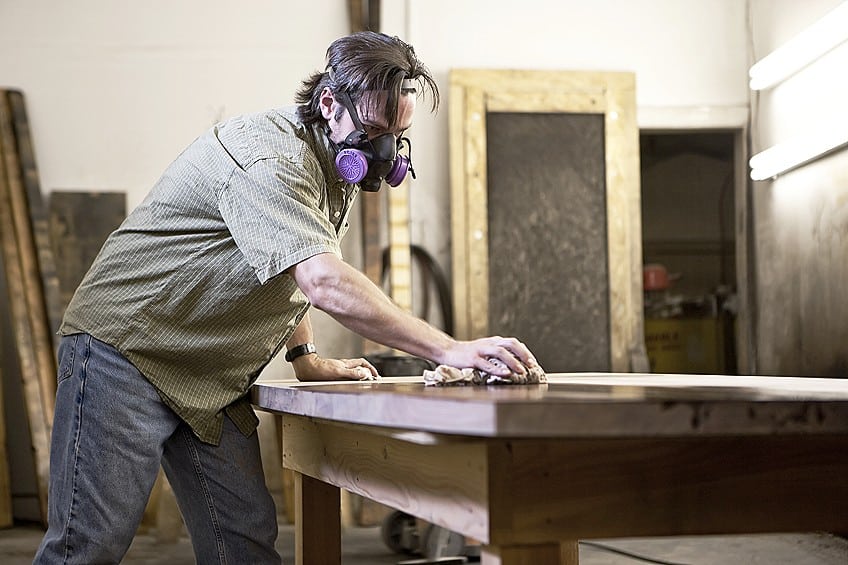
Frequently Asked Questions
Is there a Specific Time Needed for a Waterproof Wood Finish to Dry?
This depends on the type of finish and other aspects such as the temperature and humidity. Some take 24 hours, while others need 14 days to dry properly. The oil type finishes tend to take longer than the sealants, which take 24 to 48 hours to dry.
Does Waterproofing Wood last?
Depending on the product and correct application, most waterproof wood finish products should last for quite some time. However, it is recommended that you recoat every two years, although this is governed by how often you use the item.
Is it Safe to Use a Waterproof Sealant for Wood?
Yes, it should be safe as long as you follow the basic safety precautions, especially when dealing with solvent-based products. You should wear gloves, safety eyewear, and work in a space that has good air circulation.
Are Wood Oils Waterproof?
Wood oils are water-resistant, which means they can repel water to an extent. However, they are not waterproof like other wood sealants.
Can You Use Interior Sealers on Outdoor Wood Surfaces?
No, interior sealers are only for indoor wooden items. This is because exterior sealers have UV-absorbers and other enhancers the interior sealers do not have. Exterior sealers can, however, be used indoors but are likely to take much longer to dry.

I have been into woodworking since 2005 and woodturning since 2011. Because of my love for wood and woodworking, I started woodhappen.com to teach other enthusiasts about how to finish and seal wood, the best woodworking tools, the different types of wood, and everything else related to woodworking! Read more about me here.

